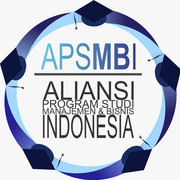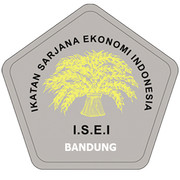Financial Literacy Among Female Entrepreneurs in Ghana: Evidence from Traditional Markets
Abstract
Keywords
Full Text:
PDFReferences
Adomako, S., & Ahsan, M. (2022). Entrepreneurial passion and SMEs’ performance: Moderating effects of financial resource availability and resource flexibility. Journal of Business Research, 144, 122-135. https://doi.org/10.1016/j.jbusres.2022.02.002
Ajzen, I. (2011). The theory of planned behaviour: reactions and reflections. Psychology & Health, 26(9), 1113-1127. https://doi.org/10.1080/08870446.2011.613995
Aman, H., Motonishi, T., Ogawa, K., & Omori, K. (2024). The effect of financial literacy on long-term recognition and short-term trade in mutual funds: Evidence from Japan. International Review of Economics & Finance, 89, 762-783. https://doi.org/10.1016/j.iref.2023.10.006
Andarsari, P. R., & Ningtyas, M. N. (2019). The role of financial literacy on financial behaviour. Journal of accounting and business education, 4(1), 24-33.
Ansari, Y., Albarrak, M. S., Sherfudeen, N., & Aman, A. (2023). Examining the relationship between financial literacy and demographic factors and the overconfidence of Saudi investors. Finance Research Letters, 52(2), 103582. https://doi.org/10.1016/j.frl.2022.103582
Atkinson, A., & Messy, F.-A. (2020). Measuring financial literacy: Results of the OECD/International Network on Financial Education (INFE) pilot study. Online library of the Organisation for Economic Cooperation and Development, 23(1), 1-11. https://doi.org/10.1787/20797117
Banna, H., & Alam, M. R. (2021). Impact of digital financial inclusion on ASEAN banking stability: implications for the post-Covid-19 era. Studies in Economics and Finance, 38(2), 504-523. https://doi.org/10.1108/SEF-09-2020-0388
Barney, J. (1991). Firm resources and sustained competitive advantage. Journal of Management, 17(1), 99-120. https://doi.org/10.1177/014920639101700108
Basias, N., & Pollalis, Y. (2018). Quantitative and qualitative research in business & technology: Justifying a suitable research methodology. Review of Integrative Business Economics Research, 7(3), 91-105.
Boateng, K. (2018). Ghana's progress in reaching out to the unbanked through financial inclusion. International Journal of Management Studies, 5(2), 1-10. http://doi.org/10.18843/ijms/v5iS2/01
Boldar, J., Omanwa, C., & Baimwera, B. (2022). Promotion of Financial Literacy through Financial Education Partnership for Financial Inclusion in Kenya: Case of Commercial Banks. Journal of International Business, Innovation and Strategic Management 6(2), 70-88
Bongomin, G. O. C., & Ntayi, J. M. (2020). Analyzing the relationship between financial literacy and financial inclusion by microfinance banks in developing countries: social network theoretical approach. International Journal of Sociology and Social Policy, 40(11/12), 1257-1277. https://doi.org/10.1108/IJSSP-12-2019-0262
Bongomin, G. O. C., Woldie, A., & Wakibi, A. (2020). Microfinance accessibility, social cohesion and survival of women MSMEs in post-war communities in sub-Saharan Africa: Lessons from Northern Uganda. Journal of Small Business and Enterprise Development, 27(5), 749-774.
Chorlton, K., Conner, M., & Jamson, S. (2012). Identifying the psychological determinants of risky riding: An application of an extended Theory of Planned Behaviour. Accident Analysis Prevention, 49(2), 142-153. https://doi.org/10.1016/j.aap.2011.07.003
Conner, M., & McMillan, B. (1999). Interaction effects in the theory of planned behaviour: Studying cannabis use. British Journal of Social Psychology, 38(2), 195-222. https://doi.org/10.1348/014466699164121
Damoah, O. B. O., & Peprah, A. A. (2021). Synthesis of small and medium enterprise research in Ghana. Journal of Global Entrepreneurship Research, 34(2), 451-468. https://doi.org/10.1007/s40497-021-00286-x
Dannels, S. A. (2018). Research design. In The reviewer’s guide to quantitative methods in the social sciences (pp. 402-416). Routledge.
David-West, O., Iheanachor, N., & Umukoro, I. O. (2019). Mobile money as a frugal innovation for the bottom of the pyramid–Cases of selected African countries. Africa Journal of Management, 5(3), 274-302. https://doi.org/10.1080/23322373.2019.1652023
Demirgüç-Kunt, A., Klapper, L., Singer, D., & Ansar, S. (2022). The Global Findex Database 2021: Financial inclusion, digital payments, and resilience in the age of COVID-19. books.google.com.https://books.google.com/books?hl=en&lr=&id=ZtiVEAAAQBAJ&oi=fnd&pg=PT14&dq=digital+financial+inclusion&ots=htbl3P1rae&sig=u9L5eNsVX19fA-9Mty7SRoEmEYA
Desai, R., Bhatt, K., & Raval, A. (2023). Financial Literacy and Its Impact on Financial Inclusion: Moderating Role of Gender. The Journal of Wealth Management, 25(1), 1-22. https://doi.org/ ttps://doi.org/10.3905/jwm.2023.1.192
Franzke, S., Wu, J., Froese, F. J., & Chan, Z. X. (2022). Female entrepreneurship in Asia: a critical review and future directions. Asian Business & Management, 21, 343–372 (2022). https://doi.org/10.1057/s41291-022-00186-2
Ghana Statistical Service, G. (2021). 2021 Population Housing Census. Provisional results (1682-1750).
Goyal, K., & Kumar, S. (2021). Financial literacy: A systematic review and bibliometric analysis. International Journal of Consumer Studies, 45(1), 80-105. https://doi.org/10.1111/ijcs.12605
Graña-Alvarez, R., Lopez-Valeiras, E., Gonzalez-Loureiro, M., & Coronado, F. (2024). Financial literacy in SMEs: A systematic literature review and a framework for further inquiry. Journal of Small Business Management, 62(1), 331-380. https://doi.org/10.1080/00472778.2022.2051176
Hasan, M. M., Yajuan, L., & Khan, S. (2022). Promoting China’s inclusive finance through digital financial services. Global Business Review, 23(4), 984-1006. https://doi.org/10.1177/0972150919895348
Hermawan, A., Gunardi, A., & Sari, L. M. (2022). Intention to use digital finance MSMEs: the impact of financial literacy and financial inclusion. Jurnal Ilmiah Akuntansi Dan Bisnis, 17(1), 171-182.
Irrinki, M. K., Kalyani, C. V., Mahalakshmi, K., Reddy, T. M. V., & Sricharan, D. (2023). Connotation of financial literacy on financial inclusion–a study in west Godavari district. Journal of Pharmaceutical Negative Results, 14(2), 1738-1750. https://doi.org/10.47750/pnr.2023.14.02.219
Jana, D., Sinha, A., & Gupta, A. (2024). Determinants of financial literacy and use of financial services: an empirical study amongst the Unorganized sector workers in Indian scenario. Iranian Journal of Management Studies, 12(4), 657-675. https://doi.org/10.22059/IJMS.2019.268945.673392
Jennah, H. (2022). OECD/INFE Toolkit for Measuring Financial Literacy and Financial Inclusion 2022. policycommons.net. https://policycommons.net/artifacts/3806897/oecdinfe-toolkit-for-measuring-financial-literacy-and-financial-inclusion-2022/4612813/
Kandpal, V., Chandra, D., Dalei, N. N., & Handoo, J. (2023). Financial Literacy for Promoting Sustainability. In Financial Inclusion in Circular Economy: A Bumpy Road Towards Sustainable Development (pp. 79-89). Cham: Springer International Publishing.
Kass-Hanna, J., Lyons, A. C., & Liu, F. (2022). Building financial resilience through financial and digital literacy in South Asia and Sub-Saharan Africa. Emerging Markets Review, 51, 100846. https://doi.org/10.1016/j.ememar.2021.100846
Kirschning, R., & Mrożewski, M. (2023). The role of entrepreneurial absorptive capacity for knowledge spillover entrepreneurship. Small Business Economics, 60(1), 105-120. https://doi.org/10.1007/s11187-022-00639-0
Koskelainen, T., Kalmi, P., Scornavacca, E., & Vartiainen, T. (2023). Financial literacy in the digital age—A research agenda. Journal of Consumer Affairs, 57(1), 507-528. https://doi.org/10.1111/joca.12510
Muchandigona, A., & Kalema, B. (2022). Mobile Phone-Based Money as a Tool for Financial Inclusion in Developing Countries: A Review. Available at SSRN 4331717.
Munyuki, T., & Jonah, C. M. P. (2021). The nexus between financial literacy and entrepreneurial success among young entrepreneurs from a low-income community in Cape Town: a mixed-method analysis. Journal of Entrepreneurship in Emerging Economies, 14(1), 137-157. https://doi.org/10.1108/JEEE-01-2020-0020
Panos, G. A., & Wilson, J. O. (2020). Financial literacy and responsible finance in the FinTech era: capabilities and challenges. The European Journal of Finance, 26(4-5), 297-301. https://doi.org/10.1080/1351847X.2020.1717569
Prasad, H., Meghwal, D., & Dayama, V. (2018). Digital financial literacy: A study of households of Udaipur. Journal of Business and Management, 5, 23-32.
Rai, K., Dua, S., & Yadav, M. (2019). Association of financial attitude, financial behaviour and financial knowledge towards financial literacy: A structural equation modelling approach. FIIB Business Review, 8(1), 51-60. https://doi.org/10.1177/2319714519826651
Saif, M. A., Hussin, N., Husin, M. M., Alwadain, A., & Chakraborty, A. (2022). Determinants of the intention to adopt digital-only banks in Malaysia: The extension of environmental concern. Sustainability, 14(17), 11043. https://doi.org/10.3390/su141711043
Shanmugam, K., Chidambaram, V., & Parayitam, S. (2023). Relationship Between Big-Five Personality Traits, Financial Literacy and Risk Propensity: Evidence from India. IIM Kozhikode Society & Management Review, 12(1), 85-101. https://doi.org/10.1177/22779752221095282
Singh, R., & Mallick, H. (2024). Financial inclusion in India: an analysis from the user-side perspective. International Journal of Social Economics. https://doi.org/10.1108/IJSE-03-2023-0162
Van Nguyen, H., Ha, G. H., Nguyen, D. N., Doan, A. H., & Phan, H. T. (2022). Understanding financial literacy and associated factors among adult population in a low-middle income country. Heliyon, 8(2), 9638-9649. https://doi.org/10.1016/j.heliyon.2022.e09638
Watanapongvanich, S., Binnagan, P., Putthinun, P., Khan, M. S. R., & Kadoya, Y. (2021). Financial literacy and gambling behaviour: evidence from Japan. Journal of Gambling Studies, 37, 445-465. https://doi.org/10.1007/s10899-020-09936-3
Wealth, E., Svotwa, T. D., & Makanyeza, C. (2023). Impact of financial education on financial literacy and financial inclusion in Namibia. In Financial Inclusion Regulatory Practices in SADC (pp. 76-89). Routledge.
Wernerfelt, B. (1995). The resource‐based view of the firm: Ten years after. Strategic Management Journal, 16(3), 171-174. https://doi.org/10.1002/smj.4250160303
Widati, S., Putri, G. A., & Arfiani, R. D. (2023, September). The Effect of Financial Inclusion and Financial Literacy on The Performance of MSMEs Batik Wonogiren (Case Study on Batik MSMEs in Wonogiri Regency). In RSF Conference Series: Business, Management and Social Sciences (Vol. 3, No. 3, pp. 196-207).
Yang, J., Wu, Y., & Huang, B. (2020). Digital finance and financial literacy: An empirical investigation of Chinese households. Applied Economics 36(1), 19-32.
Yang, Y., & Konrad, A. M. (2011). Understanding diversity management practices: Implications of institutional theory and resource-based theory. Group Organization Management, 36(1), 6-38. https://doi.org/10.1177/1059601110390997
Ziegler, T., Shneor, R., Wenzlaff, K., Suresh, K., Paes, F. F. D. C., Mammadova, L., ... & Knaup, C. (2021). The 2nd global alternative finance market benchmarking report.
DOI: https://doi.org/10.17509/image.2024.003
Refbacks
- There are currently no refbacks.
Copyright (c) 2024 Godwin Ahiase, Maya Sari, Nugraha Nugraha, Denny Andriana, Percy Chris Kpodo, Philipina Ampomah

This work is licensed under a Creative Commons Attribution-ShareAlike 4.0 International License.
Image : Jurnal Riset Manajemen is licensed under a Creative Commons Attribution-ShareAlike 4.0 International License
View My Stats



